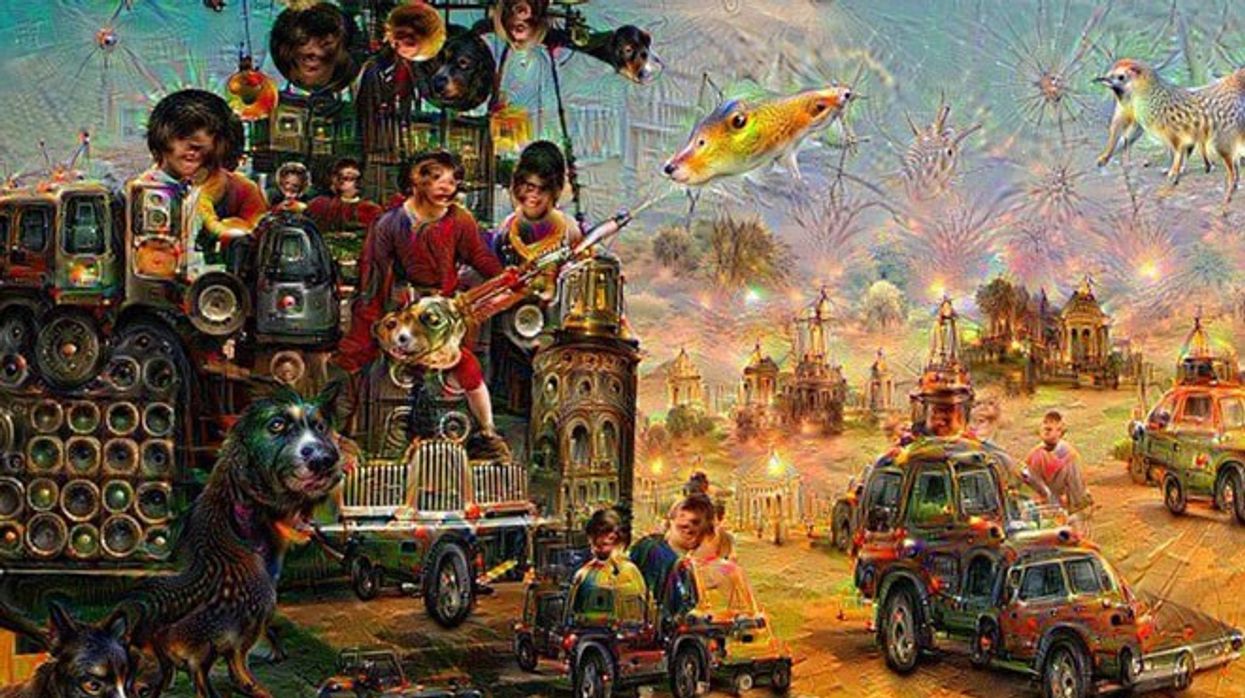Watch: Is There a Future for Film Colorization?
New algorithmic coloring software could either revitalize or stop the restoration technique cold in its tracks.

If you were a television junkie back in the late '80s or early '90s, you may remember a certain trend of classic black-and-white films popping up completely colorized. And if you watched any of them, you probably had one of two opinions.
“The first,” The Solomon Society offers in its latest video essay The Future of Film Colorization, “is that it brings new life to the movie, making it more accessible to newer and younger audiences.” The second opinion is that it degrades the work of the filmmakers. “The lighting, costumes, and atmosphere were all set up to be shot and shown on black-and-white film. It ruins the mood and tone the director wanted, because the color scheme is chosen by the colorist.”
For various reasons, the colorization trend died off relatively quickly. To this day, it remains an expensive and painstaking process.
Of course, the earliest attempts at colorization date back to the very beginning of film itself; artists would actually have to go in and hand-color each frame of a movie before it was sent to theaters. In 1983, however, NASA engineer Wilson Markle founded Colorization Inc after his work adding color to the original moon landing footage. His new process relied on the wonders of primitive technology. As Mental Floss describes in its own delve into the history of colorization, “His technicians would make a copy of a film and feed it into a computer that would determine the precise shade of gray of every object in a scene. The technicians then used a palette of over 4,000 shades of color to color the first frame in each scene. For each successive frame, technicians only had to recolor any pixels that had moved.”
Unfortunately, yet unsurprisingly, there was still a fair amount of human effort necessary for the process to be completed. If any object went through unrecognized, technicians would have to go back and dig through studio photographs of productions and costume shops to determine which color a prop or costume really was.
If they still were unable to find the right color, the colorist was deemed the authority to make a creative decision on his or her own. The process cost $3,000 per minute of film—which, back in those days, was quite a hefty sum.

But now, it's the year 2017, and Deep Neural Networking, or computer learning, exists. The Solomon Society decided to test the implications of this new technology for film colorization through a website called Algorithmia that automatically colorizes black-and-white images at the click of a button. It uses a data set of millions of images to recognize which colors may go where.
While the demo can colorize images, it hasn’t been set up to colorize film yet. But since films are 24 images per second, there’s no reason why you couldn’t simply break down the frames, colorize them one by one, and reassemble them. In the video above, that’s exactly what The Solomon Society has done.
The results of their efforts are less than astounding, but if you take Moore’s Law into consideration and tweak the technology a bit to better suit the needs of film restorers, DNN could actually provide us with a cheap and easy way to colorize films in the near future.











